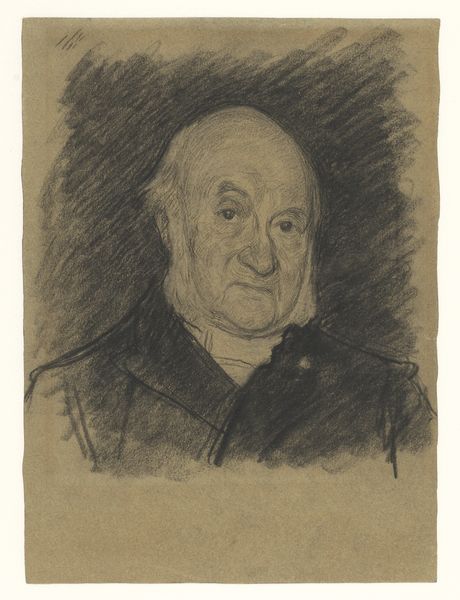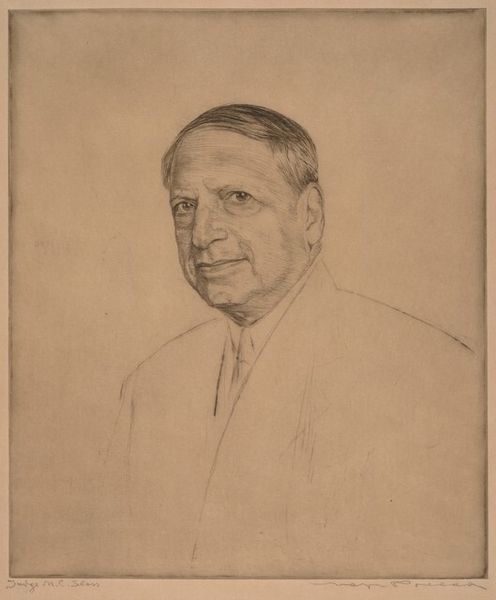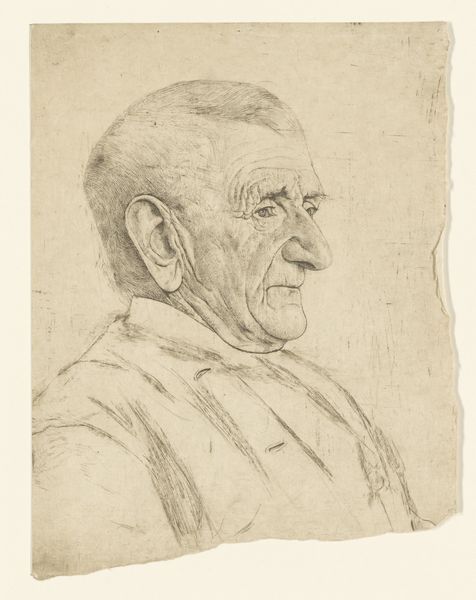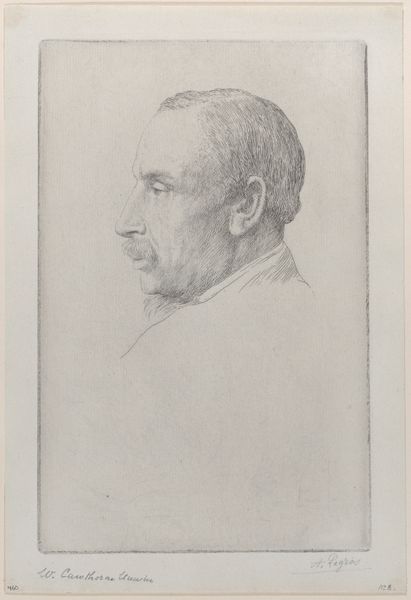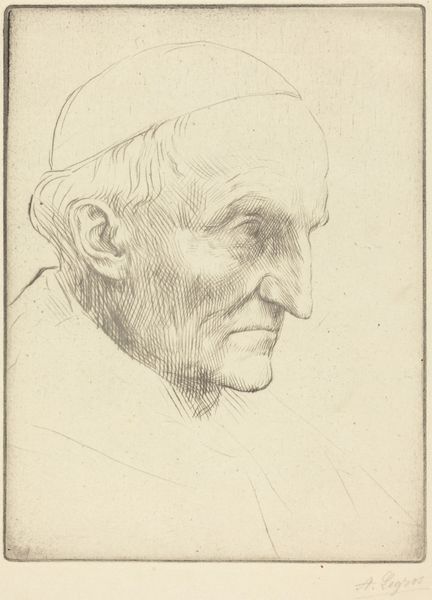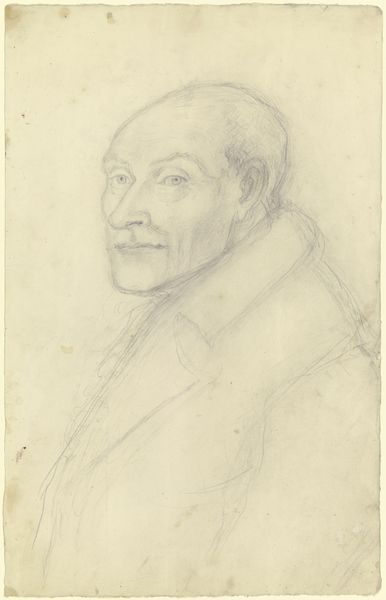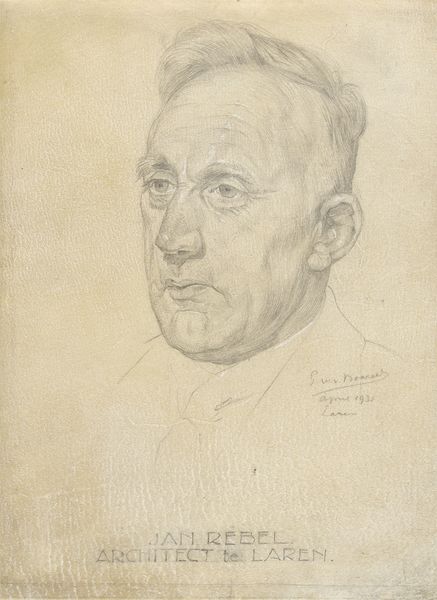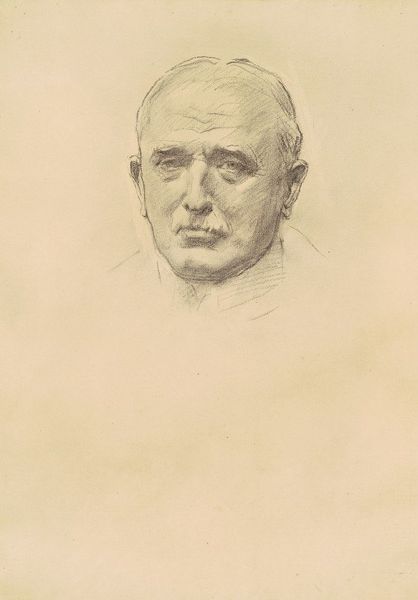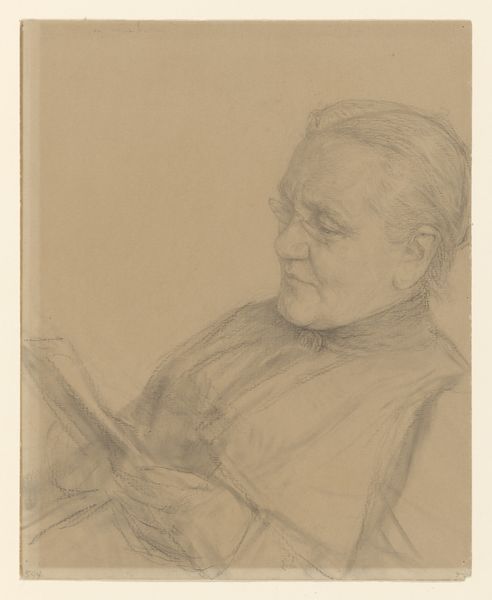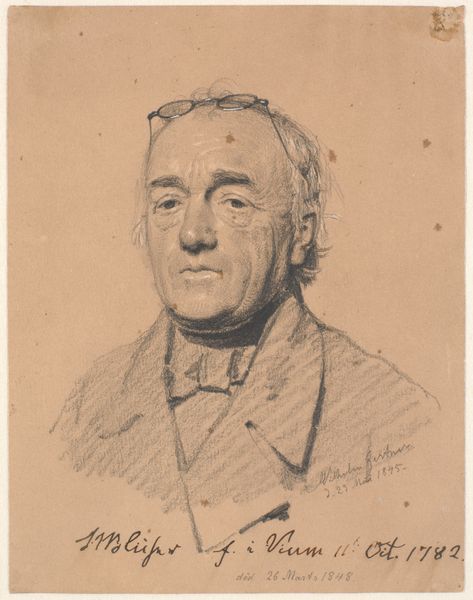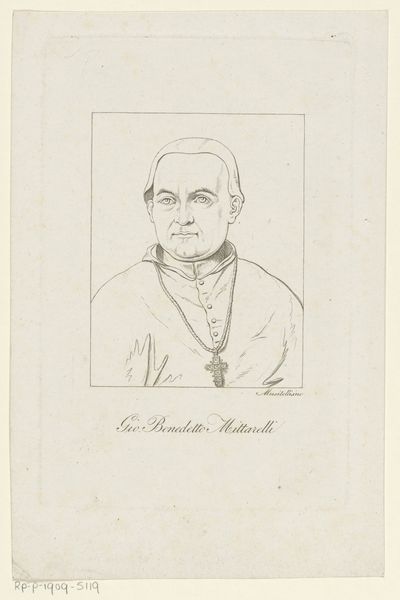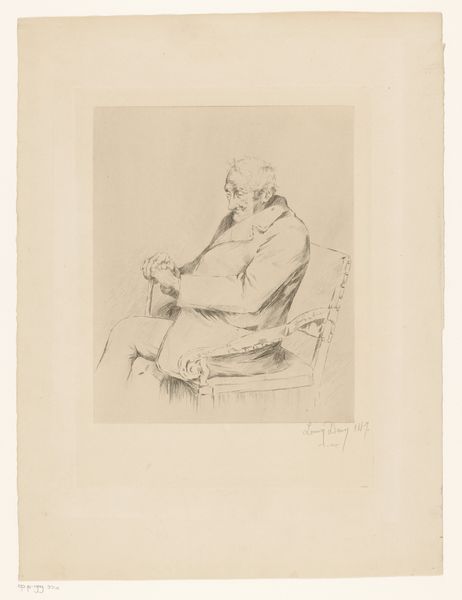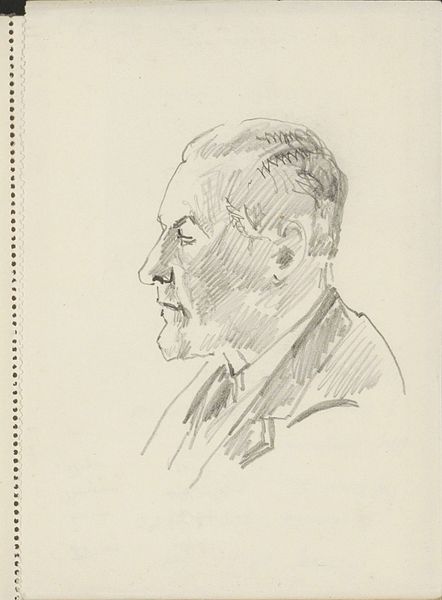
drawing, pencil, graphite
#
portrait
#
pencil drawn
#
drawing
#
facial expression drawing
#
light pencil work
#
pencil sketch
#
caricature
#
personal sketchbook
#
portrait reference
#
pencil drawing
#
pencil
#
graphite
#
portrait drawing
#
pencil work
#
academic-art
#
realism
Dimensions: height 435 mm, width 318 mm
Copyright: Rijks Museum: Open Domain
Editor: Here we have "Portret van een heer met bakkebaarden, naar links," or "Portrait of a gentleman with sideburns, facing left," by Jan Veth, created sometime between 1874 and 1925. It’s a pencil or graphite drawing. It feels unfinished, almost like a study. What catches your eye about this piece? Curator: It’s the pure essence of form that captures my attention. Observe the artist’s calculated deployment of line and value. Notice the careful articulations defining the man’s visage, achieved through varying the pressure applied to the pencil. Editor: So, you’re focusing on how the drawing is made, more than who is being drawn? Curator: Precisely. Consider the artist's structural vocabulary; the economy of lines that manage to convey so much. Look closely at the hatched strokes delineating the cheek and the way light glances across the forehead. Editor: I see what you mean about the cheek. It's almost like the lines *suggest* depth without actually filling it in. But what about the broader context of portraiture? Does the subject matter at all? Curator: The subject is secondary. Our focus is primarily on the relationship between the graphic elements within the pictorial space. How do the lines interact? How does the composition function as a self-contained system of visual signification? Editor: That’s interesting. So, the real story is in the artistry, the pure technical skill? Curator: Indeed. It is about how the artist manipulates the medium to create an image. The formal language speaks louder than any narrative. Editor: I guess I never really thought of looking at a portrait like that. Thanks, that's given me a totally new way of seeing it. Curator: You're welcome. Sometimes reducing an artwork to its essential visual components reveals a greater truth about its construction.
Comments
No comments
Be the first to comment and join the conversation on the ultimate creative platform.
